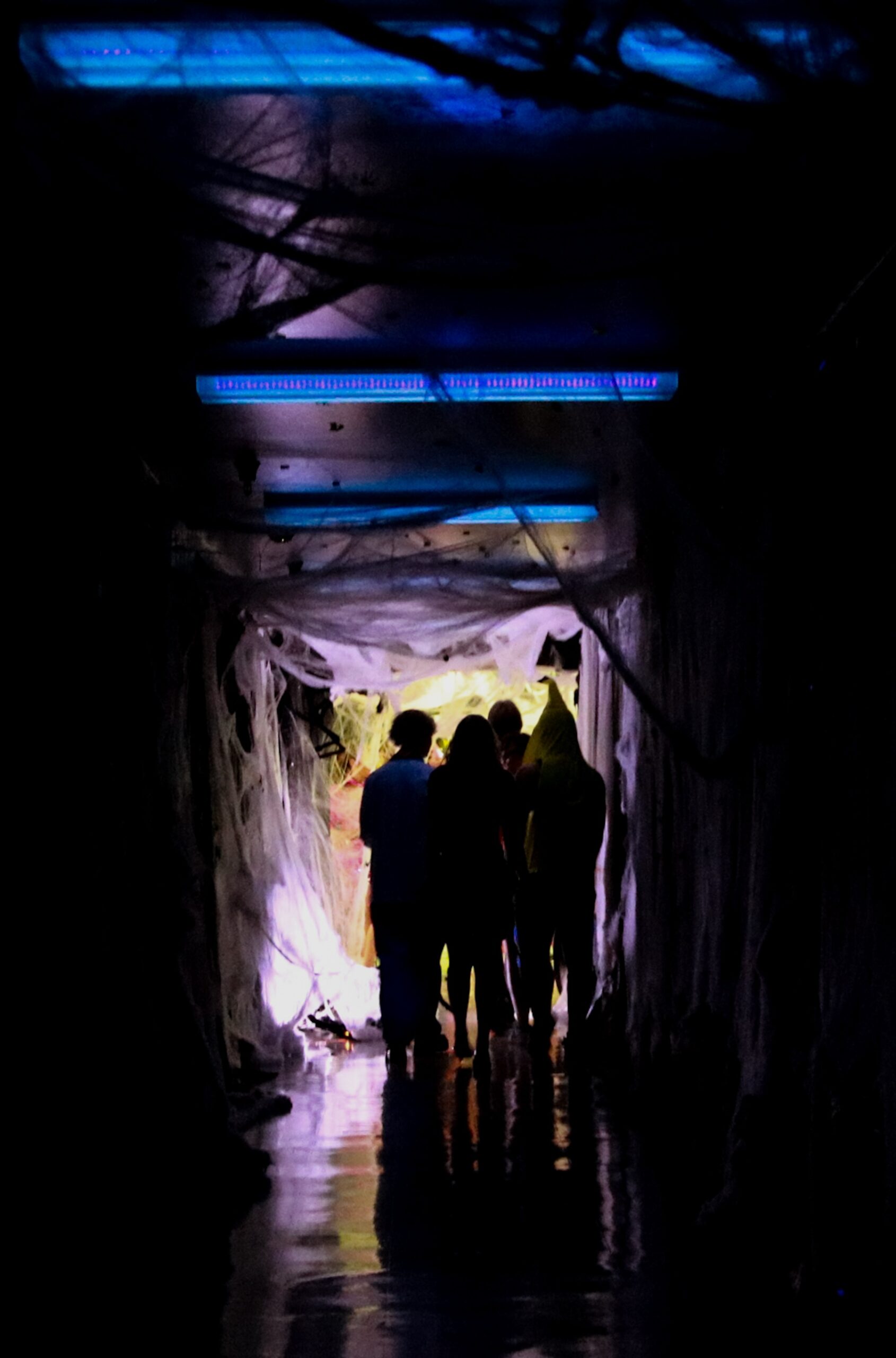Safety on the trails of terror
On Oct. 25, Utah State University students and the general public flocked to the highly anticipated annual Halloween party, the Howl. Themed “Trails of Terror,” the event included two dance parties, a haunted house, a hypnotist show and various activities to entertain partygoers.
Spencer Bitner, director of involvement and student events adviser, wrote about safety at the Howl.
“Our main goal with continuing the tradition of the Howl is to create a safe space for students to dress in costumes and enjoy the Halloween Season. It is a staple at USU and we work each year to improve the event and mitigate risk,” Bitner wrote in an email to the Utah Statesman.
Josie Packer, USUSA activities director wrote, to the Statesman about ways they keep attendees safe.
“Safety measures that we take are hiring police officers and security offers to be at the event. We also provide some trainings for the volunteers for them to be more aware of intoxication and potential sexual misconduct,” Packer wrote.
USU Police Department Sergeant Erik Christensen was present at the Howl, helping ensure the welfare of attendees.
“A short synopsis of what went on at the Howl is a whole lot of nothing,” Christensen said. “Pretty dang time but still every bit as fun.”
According to Christensen, the USU Police Department handed out two citations for alcohol to non-students and responded to about seven medical calls regarding fainting due to overheating.
“It’s to the point where guys like me who have daughters are happy to send them to this,” Christensen said. “We just kind of employed some techniques and technology to make it so that the alcohol stays out and no one’s getting groped on the dance floor and things like that.”
One technique implemented included cameras and screens at the entrance of both dance areas to show guests they were being monitored. There were more than 1,500 cameras across the campus. Additionally, wearing masks with costumes was not allowed to prevent anonymity.
“This year we more than doubled the ‘costumes are not consent’ posters in the venues. We adjusted our entry line so that IDs and props would be checked inside the building,” Bitner wrote. “This afforded us better access control and visibility at the entrance. Our new electronic ticketing system has reduced the amount of individuals trying to enter without tickets. We have a much better registry of who is in attendance because of this system.”
On the night of the Howl, 26 officers were present, spread throughout the Fieldhouse, TSC and parking areas. Christensen said there were more important factors than a prominent police presence to a safe night.
“Title IX has done a great job of just the upstanding program, training our students as they come in through Connections. And so really, I think the police— we’re probably more of an auxiliary that we maybe pick up a few loose ends that are left over,” Christensen said. “So I would give complete credit to SAAVI and to Title IX for all of the work that they’ve done and to Linda Zimmerman’s group for being open to take and make the changes that have been necessary and to suggest changes.”
Medical calls outweighed any illegal incidences this year.
“We’ve had an uptick in these medical calls where it’s just people that feel faint. They haven’t eaten all day. It’s not related to alcohol or anything, it’s just one of those little phenomena that we’ve just seen an increase in lately,” Christensen said. “It’s happened in a lot of the games, like football games that have been hot. I don’t know what it is. I don’t know if we’re not hydrating enough and eating well, right? But it’s concerning.”
To combat this, efforts are being made to cool down the dance areas and include water stations to allow guests to stay hydrated.
“I feel it was a safe and well executed event on our end. We had great support from USU Security and Police, TSC Management, Logan Paramedics and the USU Office of Events,” Bitner wrote.

